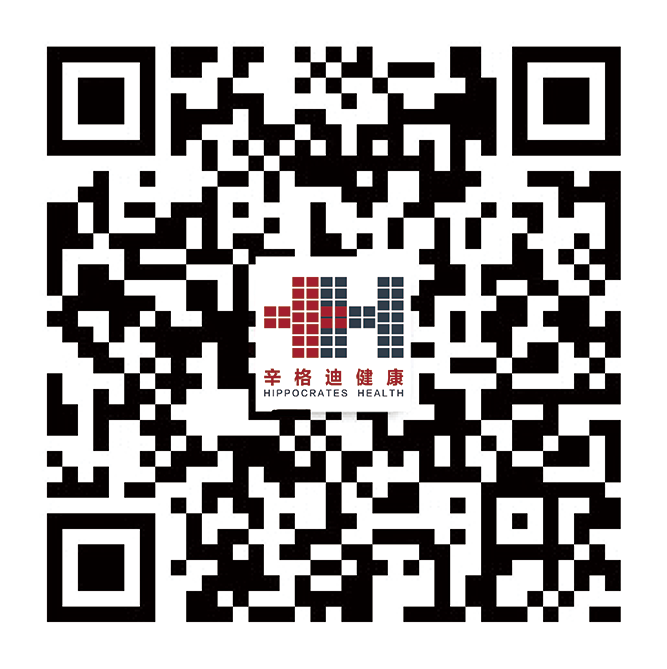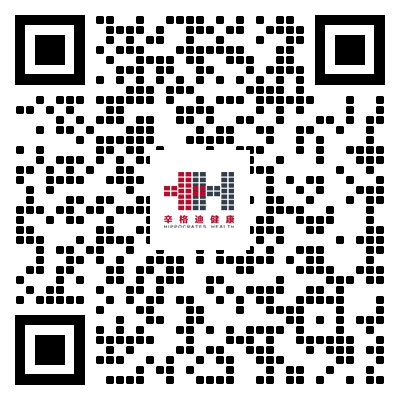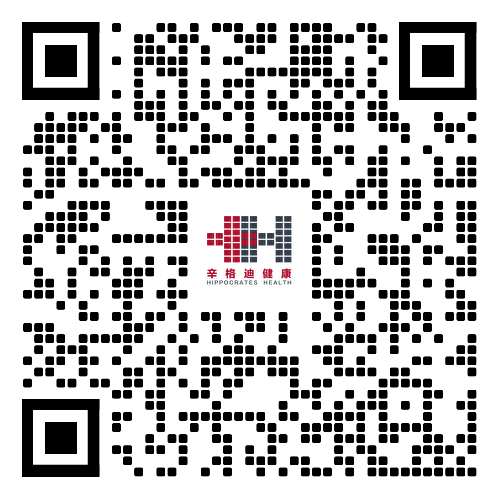Project on Pharmacovigilance Management System (PVS) of Beijing Xinlida Pharmaceutical Technology Co., Ltd.
I. Case Overview
Beijing Xinlida Pharmaceutical Technology Co., Ltd. (hereinafter referred to as "Xinlida"), founded in 2014, is a professional domestic Contract Research Organization (CRO) providing comprehensive clinical trial services. It focuses on offering specialized services and solutions such as clinical trial data management, statistical analysis, and pharmacovigilance to domestic and foreign pharmaceutical companies, biotechnology enterprises, and health-related entities.
Xinlida leverages information technology to realize modularized and standardized processes for clinical trial data, improving work efficiency and reducing costs for clients. Since its establishment, Xinlida has operated with a customer-oriented approach and the "altruism" philosophy. It distinguishes itself by optimizing the entire data management process, enhancing real-time data verification quality, and developing independent project management tools. Through its professional platform, Xinlida provides international standard-compliant data statistical solutions and comprehensive Standard Operating Procedures (SOPs). During project implementation, it ensures quality, mitigates risks, and has become a trustworthy partner for clients. Currently, Xinlida has served over 300 well-known domestic and foreign pharmaceutical enterprises, undertaken more than 700 projects, and handled over 300 innovative drug projects.
In recent years, China's pharmaceutical industry has been in a phase of upgrading and iteration, with rapid progress in new drug R&D, which has driven the fast development of pharmacovigilance business in China. Xinlida started its pharmacovigilance business in 2019 and has participated in nearly 100 pharmacovigilance projects. Collaborating with Singdi is a crucial step for Xinlida to further strengthen and deepen its services in the pharmacovigilance field. As a CRO company, Xinlida has traditional strengths in data management and biostatistics, and is proficient in applying digital technologies; while Hippocrtaes has a solid foundation in digital platform development. The cooperation between the two parties will surely generate complementary and synergistic effects. The pharmacovigilance services supported by digital technologies can rapidly improve the collaboration level among various parties, and solve issues such as quality control, multi-party collaboration, and data interoperability in a more accurate and efficient manner.
II. Project Background
With the official implementation of China's newly revised Drug Administration Law in December 2019 and the release of the Announcement on Good Pharmacovigilance Practice (GVP) (No. 65 of 2021) on May 7, 2021, China has officially entered the era of pharmacovigilance. Pharmacovigilance activities revolve around two core threads: one is centered on the construction of a pharmacovigilance system, requiring marketing authorization holders (MAHs) to establish, operate, and maintain a pharmacovigilance system; the other is focused on drug risk management, demanding MAHs to monitor, identify, assess, and control risks.
The Pharmacovigilance Department of Xinlida adheres to the vision of "safeguarding patient safety and strictly controlling drug safety". It specializes in providing pharmacovigilance professional services covering the entire product life cycle for innovative enterprises in the pharmaceutical, medical device, and cosmetics sectors. It maintains high alignment with domestic and foreign regulatory authorities to ensure the compliance of enterprises' pharmacovigilance activities. With clients at the core, Xinlida provides comprehensive, forward-looking, and rational suggestions as well as high-quality solutions to assist enterprises in advancing their marketization process and post-marketing risk monitoring.
To comprehensively enhance its professional service capabilities in pharmacovigilance, Xinlida has reached a strategic cooperation with Shanghai Hippocrtaes Health Technology Co., Ltd. (hereinafter referred to as "Hippocrtaes"). The two parties will jointly develop a "professional, precise, and efficient" solution in the pharmacovigilance field, and jointly provide clients with more high-quality, efficient, and precise pharmacovigilance services based on compliance.
III. Specific Measures
III.I Overall Planning
Singdi's Pharmacovigilance Solution (PVS; Jingtai®, VigiTrust®) is built on the Aotai Platform. It integrates pharmacovigilance regulatory databases, pharmacovigilance system documents, industry-related training courses, quality management systems and processes, electronic signatures, and SAE (Serious Adverse Event) assistants. As a comprehensive and all-round digital pharmacovigilance solution, it can help enterprises quickly establish a pharmacovigilance business operation system that complies with national regulations and regulatory requirements. Singdi PVS can assist enterprises in rapidly building a comprehensive digital pharmacovigilance management platform (as detailed below).
III.II Business Model
Since 2015, China has launched pharmaceutical regulatory reforms and put forward the "Four Strictest" requirements (the strictest standards, strictest supervision, strictest law enforcement, and strictest penalties). China's pharmaceutical industry supervision has become more stringent and aligned with the international mainstream markets. Typical deficiencies identified in previous GVP inspections often include:
- Inadequate pharmacovigilance system: Enterprises may fail to establish a sound pharmacovigilance system, including the monitoring, identification, assessment, and control of adverse drug reactions (ADRs) and other harmful reactions related to drug use.
- Insufficient participation of professional management personnel: Enterprises may fail to ensure the full participation of pharmacovigilance management personnel in business activities, leading to incomplete implementation of pharmacovigilance work and inadequate drug safety management.
- Poor quality of pharmacovigilance reports: Enterprises may fail to attach sufficient importance to pharmacovigilance reports, such as individual case safety reports (ICSRs), development safety update reports (DSURs), and periodic safety update reports (PSURs), resulting in incomplete and low-quality reports that fail to meet regulatory requirements.
- Inadequate risk communication: Pharmaceutical enterprises may fail to collaborate effectively with medical institutions, pharmaceutical manufacturers, and pharmaceutical distributors in conducting pharmacovigilance activities, leading to insufficient risk communication.
- Inadequate supervision of innovative drugs and improved new drugs: For products such as innovative drugs and improved new drugs, pharmaceutical enterprises may fail to strengthen post-marketing monitoring based on the safety characteristics of the products, and fail to enhance the awareness of reporting suspected ADR information among medical institutions, pharmaceutical manufacturers, pharmaceutical distributors, and patients.
- By implementing Singdi's Pharmacovigilance Management Solution (PVS), Xinlida helps pharmaceutical companies comprehensively enhance their pharmacovigilance management capabilities and meet industry compliance requirements in response to the complex regulatory requirements of the pharmaceutical industry, through the following aspects:
- Establish a sound pharmacovigilance system: Pharmaceutical enterprises need to establish and continuously improve their pharmacovigilance systems in accordance with the Good Pharmacovigilance Practice (GVP), ensuring that the systems cover the monitoring, identification, assessment, and control of ADRs and other harmful reactions related to drug use throughout the entire drug life cycle.
- Personnel training and qualification: Pharmaceutical enterprises should be equipped with a sufficient number of full-time personnel with appropriate qualifications, and conduct pharmacovigilance training to ensure that relevant personnel possess the necessary knowledge and skills.
- Standardize the conduct of pharmacovigilance activities: Pharmaceutical enterprises should standardize pharmacovigilance activities, including the monitoring and reporting of ADR information, risk identification and assessment, and risk control, to comply with the requirements of the National Medical Products Administration (NMPA).
- Quality management and internal audit: Pharmaceutical enterprises should establish a quality assurance system, conduct regular internal audits to evaluate the suitability, adequacy, and effectiveness of the pharmacovigilance system, and take corrective and preventive measures for identified issues.
- Risk communication: Pharmaceutical enterprises should collaborate with medical institutions, pharmaceutical manufacturers, and pharmaceutical distributors in conducting pharmacovigilance work, and conduct effective risk communication when necessary.
- Compliance with international standards: With the internationalization of the pharmaceutical industry, pharmaceutical enterprises also need to comply with international standards, such as the ICH E2B(R3) standard, to ensure the compliance of individual case safety report (ICSR) submissions.
- The implementation of PVS not only improves the efficiency and quality of pharmacovigilance management but also helps enterprises establish a comprehensive pharmacovigilance management system, thereby enhancing the safety and compliance capabilities of drugs.
III.IIITechnical Architecture
Singdi's PVS is one of the core solutions on Singdi's Aotai Digital Platform. The Aotai Platform is a digital platform jointly developed by Hippocrtaes's industry experts and IT experts. With "quality and compliance expert" as its management concept and market positioning, it helps enterprises improve their quality and compliance levels, meet industry supervision requirements, enhance enterprise management capabilities, and accelerate the launch of more safe, effective, and high-quality products.
The applications on the Aotai Platform can be customized to meet the specific needs of enterprises for quality systems. The built-in configuration tools already include multiple quality management functions, eliminating the need for customization or programming to implement certain special processes. Trained personnel can quickly customize forms, decision trees, and dashboards to meet specific business needs.
The superior design of the Aotai Platform ensures that users can quickly access large volumes of records and data, thereby improving work efficiency. The "intelligent loading" of forms minimizes loading time. Frequently used data is cached to maximize network bandwidth utilization. Data is stored in an effective manner, and the distributed architecture is optimized for server expansion. The standard Application Programming Interfaces (APIs) greatly improve system access efficiency, including automatic email notifications, SMS notifications, and dashboard alerts integrated into the workflow, which significantly reduce the risk of missing tasks or approvals. The background task submission and management mode supports users to perform other tasks simultaneously. A standard intermediate service layer is provided to support integration with any third-party system, facilitating data exchange between the Aotai Platform and other application systems.
IV. Construction Achievements
IV.I Enterprise Achievements
Singdi PVS can not only help enterprises quickly establish a pharmacovigilance management system but also assist pharmaceutical enterprises in conducting comprehensive pharmacovigilance activities, including: entry of individual case safety reports into the system; quality control of individual case safety reports; medical review of individual case safety reports and drafting of Serious Adverse Event (SAE) descriptions; drafting of post-marketing key monitoring study protocols; drafting of key monitoring reports; drafting of clinical trial reports; retrieval of adverse events in Chinese and English literature; and formulation of risk control/management strategies. Based on the Aotai Platform, the solution integrates pharmacovigilance regulatory databases, pharmacovigilance system documents, industry-related training courses, quality management systems and processes, electronic signatures, and SAE assistants. As a comprehensive and all-round digital pharmacovigilance solution, it can help enterprises quickly build a pharmacovigilance business operation system that complies with national regulations and regulatory requirements.
Singdi PVS helps enterprises establish a comprehensive digital management model based on "Jingtai®", enabling them to meet the increasingly strict regulatory requirements they face.
IV.II Social Achievements
(1) Ensuring enterprises meet inspection and industry supervision requirementsIt helps enterprises build a digital management system to meet industry supervision requirements. The PVS system covers the entire workflow of pharmacovigilance work, with a design that complies with relevant domestic and foreign standards and meets regulatory requirements. It has built-in audit trails and query management functions to meet the inspection and audit requirements of enterprises.
(2) Intelligent data collection and data analysisIt features convenient and fast data collection, supporting both computer and mobile terminals, with process-based and guided collection that is simple and easy to learn, and permanent data retention. It can generate multi-dimensional reports covering drugs, clinical trials, regions, and patients, enabling comprehensive data analysis by day, week, month, and the entire cycle. It also provides real-time data query and rich graphical report presentation functions. In addition, it can quickly generate PSURs and DSURs, with guided operations and automated report generation, featuring short report cycles and high efficiency.
(3) Improving drug safety to ensure people have access to safe medicinesSingdi PVS can timely monitor and identify ADRs, assess drug safety, thereby reducing the occurrence of ADRs and safeguarding public drug use safety. Through the analysis of ADRs, pharmaceutical enterprises can identify problems in the drug production and use processes, and further improve drug quality and enhance drug efficacy. The drug safety information provided by the pharmacovigilance system can assist doctors and pharmacists in making more rational drug use decisions, improving the safety and effectiveness of clinical drug use. Through the monitoring and analysis of the pharmacovigilance system, drug risks can be identified and controlled in a timely manner, reducing harm to patients caused by ADRs and protecting patients' rights and interests.
(4) Realizing greater public health valueSingdi PVS can improve the efficiency of collecting and analyzing drug safety information, helping pharmaceutical enterprises and regulatory authorities allocate resources more rationally and enhance work efficiency. It can assist pharmaceutical enterprises in better understanding the performance of drugs in actual use, providing feedback for drug R&D and promoting pharmaceutical innovation. It helps to timely identify and control drug safety incidents, reduce the occurrence of public health incidents, and improve public health standards. The application of PVS can also help pharmaceutical enterprises comply with international pharmaceutical regulatory standards and promote international pharmaceutical cooperation; it contributes to pharmaceutical enterprises meeting national and international regulatory requirements, ensuring drug safety, and protecting public health.
V. Related Solutions
Pharmacovigilance Solution (PVS)
VI. Related Cases
Case 1: Pharmacovigilance Management System (PVS) Project of Hangzhou Puru Life Technology Co., Ltd.
Case 2: Pharmacovigilance Management System (PVS) Project of Beijing Northland Pharmaceutical Co., Ltd.
Case 3: Pharmacovigilance Management System (PVS) Project of Sinovac Biotech Co., Ltd.



